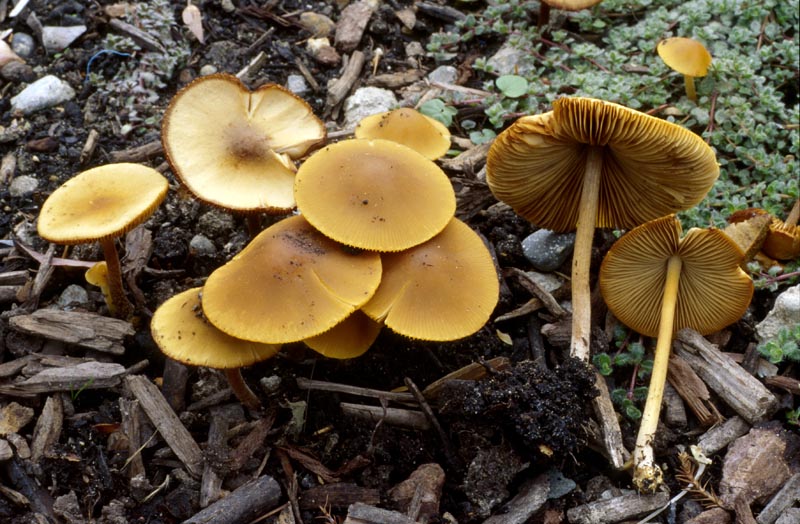Conservation Status: Not of concern
Conocybe aurea is representative of the mainstream conocybes and is related to the widespread and common C. tenera complex. It has vivid apricot yellow, orange-yellow, or pale orange, relatively large (up to 50 mm (2 in.) or more) caps that are often shiny at first. The stipe is cream to pale yellow-brown and pruinose; the gills cream-colored and become rust brown in age. The large (10--13 x 6--7.5 µm) smooth spores are somewhat almond-shaped. C. aurea can occur abundantly in commercial compost applied in home landscaping. The most commonly encountered conocybe in our experience is C. lactea It has a narrower whitish cap, is extremely fragile, and grows in lawns.
Sources: Trudell, Steve and Joe Ammirati. Mushrooms of the Pacific Northwest. Portland, Timber Press, Inc. 2009.
PNW Herbaria: Specimen records of Conocybe aurea in the Consortium of Pacific Northwest Herbaria database.
CalPhotos: Conocybe aurea photos.



